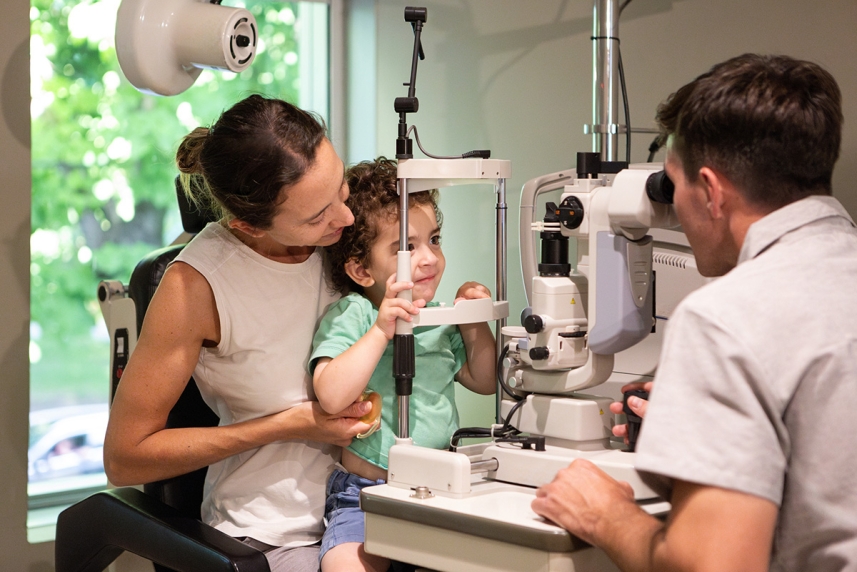How to spot vision problems in non-verbal children
Understanding early visual cues in babies, toddlers and kids with developmental differences can help guide timely care.

Some children have a hard time telling others when something feels wrong. That can be true for babies, toddlers or children with developmental disabilities or autism spectrum disorder (ASD). If a child can’t speak or explain what they see, how can a parent know if there’s a problem with their vision?
There are signs to look for. This guide breaks them down by age and condition, so parents and caregivers can better understand what to watch for and why regular eye exams matter for every child.
Babies (0–12 months)
Babies start using their eyes early. By 4 weeks, most babies can focus on nearby objects, especially brightly colored ones.1 By 3 months, many can follow moving faces or objects with their eyes.2
If a baby doesn’t do these things, it could be a sign that something’s not quite right. Other signs to watch for include:
- Eyes that look crossed or wander (especially after 2 months)1
- Extreme sensitivity to light
- Pupils that look cloudy or white instead of black
These may point to early vision issues that can affect how a baby learns to see the world.
Toddlers (1–3 years)
Toddlers explore by looking, grabbing and moving. Vision problems may show up as:
- Squinting or tilting the head to see something
- Covering one eye
- Rubbing eyes often
- Bumping into things more than expected
- Holding toys very close to the face
- Avoiding books or puzzles
These signs may seem small, but they matter. Trouble seeing can affect how a child plays, learns and connects with others. Make an appointment with an eye care provider if these signs arise.
Looking for a new eye care provider? Search the UnitedHealthcare Vision Network today.
Children with developmental disabilities
Some children with developmental delays may not speak or may struggle to explain what they see. But there are still ways to tell if vision is a challenge.
Look for:
- Squinting or holding objects close
- Avoiding puzzles, books or other visual tasks
- Frustration during play that involves looking at small objects or shapes
- Trouble recognizing faces or matching shapes and letters
Sometimes these signs are mistaken for behavior problems, but they may be linked to vision. A child who seems frustrated may simply be having trouble seeing clearly.
Many non-verbal children with vision issues are not diagnosed right away. That’s because the signs are easy to miss or may look like part of another condition.
Children with autism spectrum disorder (ASD)
Vision issues can be common in children with ASD. Some behaviors may include:2
- Flapping fingers in front of the eyes
- Looking “through” objects or not focusing on them
- Turning the head instead of looking straight at something
- Poor eye contact
- Sensitivity to light
- Not showing fear when standing at a height, or becoming overly fearful
These behaviors can sometimes be part of how a child with ASD experiences the world, but they can also be signs of a vision problem. A full eye exam can help tell the difference.
Eye care providers in the UnitedHealthcare Vision Network can keep people of all ages’ vision healthy. Search for network providers now.
Why eye exams matter
Early detection is important. A child’s vision plays a big role in learning, social growth and safety.
Eye exams can be done at any age, even for children who don’t talk or respond easily. Pediatric eye doctors use tools and tests that don’t require words or reading.3 Some exams use lights, toys or matching games to check how well a child sees. Others use special cameras or lenses to look at the eyes themselves.
Exams are gentle and can be adjusted based on what the child needs. Doctors who work with children with disabilities or ASD often take extra time and use calming steps to help the child feel safe.
Sources:
- Vision Development: Newborn to 12 Months. American Academy of Ophthalmology, July 12, 2024
- Infant and Toddler Health. Mayo Clinic, March 13, 2025
- Does Autism Cause Vision Problems? Top 6 FAQs. Optometrists Network


